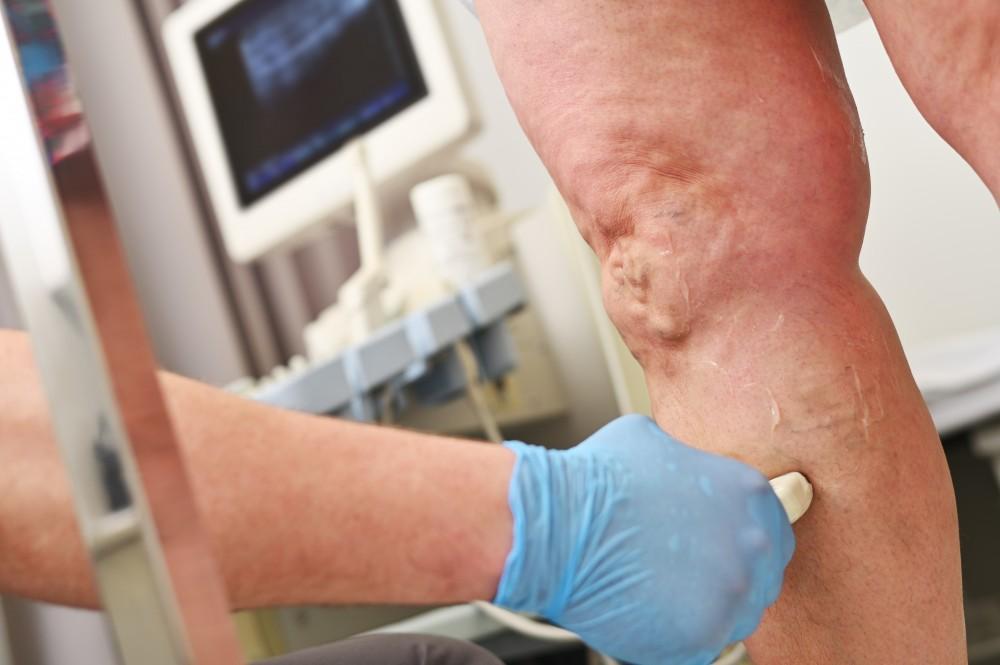
The Dangers of Deep Vein Thrombosis

Vein issues, such as varicose veins, aren’t just a cosmetic concern. Untreated varicose veins can increase your risk of a potentially dangerous condition called deep vein thrombosis.
Deep vein thrombosis doesn’t occur in isolation. In fact, 66% of people with deep vein thrombosis had pre-existing vein conditions like venous insufficiency.
So, what is deep vein thrombosis, and why is it so serious?
Read on as our South Shore Vein and Aesthetic Medicine team answers those questions.
What is deep vein thrombosis?
Deep vein thrombosis is a blood clot that forms in a deep vein (as opposed to a superficial one close to the surface of your skin). Deep vein thrombosis can develop when blood flow slows or becomes sluggish, which can lead to clot formation.
Risk factors
Identifying your risk factors for deep vein thrombosis is your first step to avoiding the dangers of a blood clot.
Risk factors for deep vein thrombosis include:
- Prolonged sitting or immobility (e.g., during long flights or hospital stays)
- Recent
- Smoking
- Being overweight or pregnant
- Taking hormone therapy
- Having a family or personal history of blood clots
You can lower your risk of developing deep vein thrombosis by managing modifiable risk factors. For example, quitting smoking, staying physically active, and following all post-operative instructions, such as wearing compression garments after surgery, can help prevent blood clots.
Symptoms of deep vein thrombosis
You may suspect deep vein thrombosis if you experience swelling in one leg, pain or tenderness that often begins in the calf, warmth or redness over the affected area, and a feeling of fatigue or heaviness in the leg.
4 dangers of deep vein thrombosis
Now that we’ve covered what deep vein thrombosis is and what causes it, let’s talk about the potential dangers of a blood clot forming in a deep vein — often located within or between the muscles of your leg.
1. Pulmonary embolism
If left untreated, deep vein thrombosis can lead to life-threatening complications, including pulmonary embolism. This occurs when part of the clot breaks off, travels through your bloodstream, and blocks blood flow to your lungs.
You might suspect you’re having a pulmonary embolism if you have:
- Sudden shortness of breath
- Chest pain that worsens with deep breathing
- Rapid pulse
- Coughing, sometimes with blood
A pulmonary embolism can be fatal if not treated immediately, so seek emergency medical attention if you suspect you have one.
2. Post-thrombotic syndrome
Post-thrombotic syndrome is a long-term condition that can develop after a deep vein thrombosis. Post-thrombotic syndrome is notorious for causing persistent leg pain, swelling, skin discoloration, and a feeling of heaviness in the legs.
About one in five people with DVT develop post-thrombotic syndrome. In severe cases, it can lead to venous ulcers — open sores that affect approximately one in 50 people with DVT.
3. Recurrent deep vein thrombosis
Once you’ve had a DVT, your risk of developing another clot increases, especially without ongoing management or preventive care.
Recurrent clots can compound vein damage and increase your chance of other complications.
4. Chronic venous insufficiency
If a deep vein thrombosis damages the valves in your veins, it can interfere with normal blood flow and contribute to chronic venous insufficiency. This condition causes blood to pool in your legs and cause swelling, pain, and, over time, skin changes or ulcers.
Treating deep vein thrombosis before complications arise
While the thought of a blood clot (anywhere in your body) can feel overwhelming, there’s good news: at South Shore Vein and Aesthetic Medicine in Rockville Centre, New York, our expert team uses advanced diagnostic tools and minimally invasive treatments to detect and treat deep vein thrombosis before it leads to serious harm.
Depending on the severity of your condition, fellowship-trained, double-board-certified vein and vascular specialist Dr. Jacobs may recommend:
- Blood thinners (anticoagulants) to prevent clot growth and reduce the risk of a pulmonary embolism
- Compression stockings to improve your circulation and reduce swelling
- Thrombolytic therapy to break up large clots in severe cases
- Inferior vena cava (IVC) filter placement to prevent clots from reaching the lungs
- Treatments to address chronic venous insufficiency
Dr. Jacobs has three primary goals when treating deep vein thrombosis: to prevent the clot from growing larger, to prevent the clot from dislodging, and to prevent future clots from forming.
To that end, he may recommend lifestyle modifications to help support your vascular health.
Prioritize your vein health
If you’re experiencing symptoms of deep vein thrombosis or have risk factors for blood clots, don’t wait to seek care. At South Shore Vein and Aesthetic Medicine, Dr. Jacobs offers advanced, minimally invasive treatments that address both the appearance and the health of your veins.
Contact us to schedule a consultation, or simply give us a ring at 516-865-1234.
You Might Also Enjoy...


Why Facial Veins Appear and What You Can Do About Them

Understanding Venous Insufficiency: Signs, Causes, and Treatments

Are Varicose Veins a Health Concern?

Can I Have Botox and Dermal Fillers During the Same Treatment Session?


